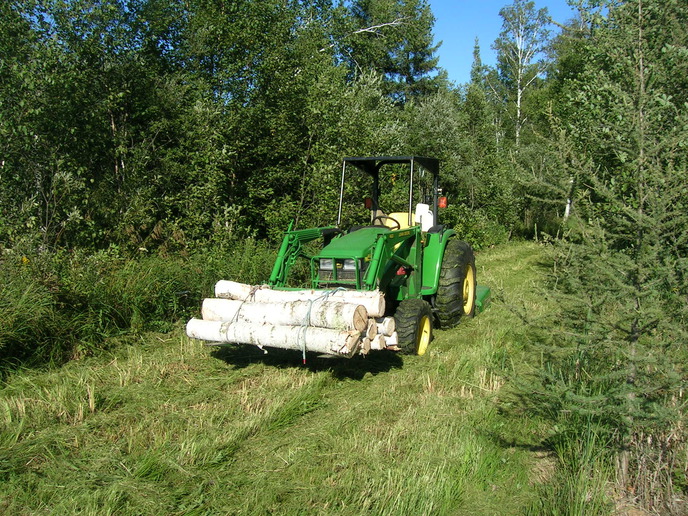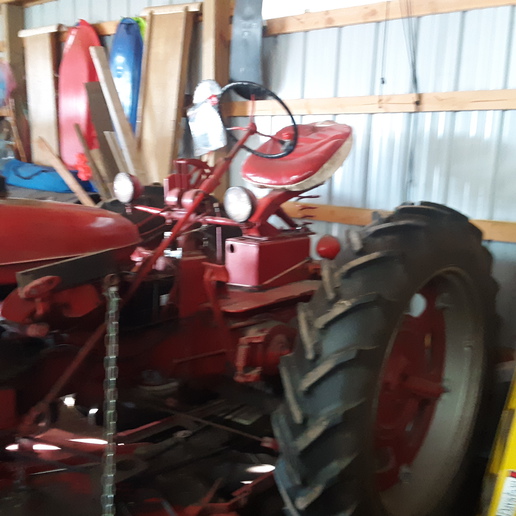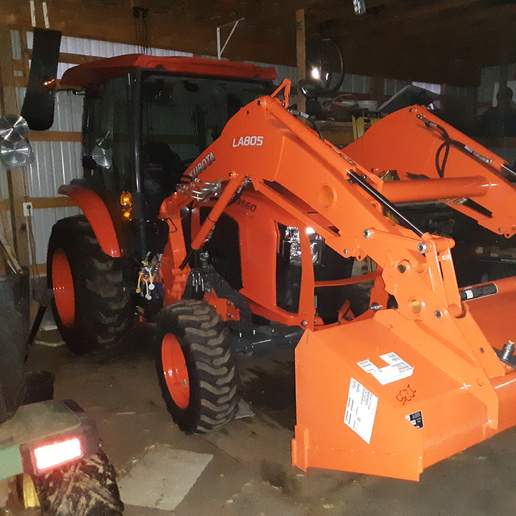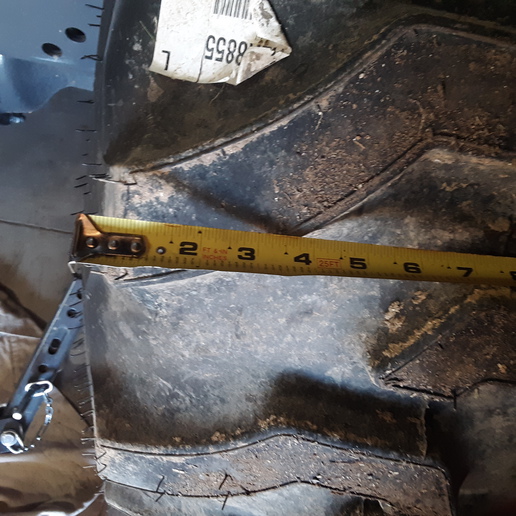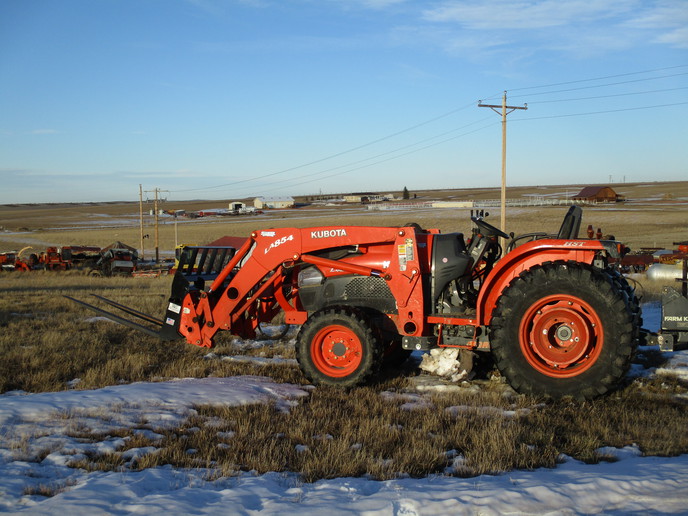Geo-TH,In
Well-known Member
I've never been a fan of fluid in tires. I prefer using rear ballast to remove weight off front wheels.
That said, I left the loader on the L3560 Kubota and used it to mulch 2 acres of leave at a rental property. In first gear the jubilee would be going 3.2 mph, second gear 4 mph at 1800 rmps. At 1550 rpm's PTO would be 540 rpms. I could easly handle the ride on the ford.
On the Kubota I had to set rpms at 2400 to get a 540 rpm. I had to set hi/lo range to lo and rear end in M to get speeds I needed. The tractor could go faster than 4 mph and easily handle the mower. Only Problem, my back couldn't handle more than 3 mph.
I reduced the rear tire pressure to 10 psi, and I was tossed side to side, back and fourth, up and down as if I were a bobble head. Back was killing me.
Next summer off comes the loader. I think the loader is why I had a ruff ride. The tractor will be on lawn mowing duty after some tree branches get pruned.
So my question is will fluid in the tires make the ride ruffer or smoother without the loader ?
I don't care if you think it will help loader. What can I do to get a smoother lawn tractor.
If you think fluid it will be smoother, have you added fluid yourself? If so how?
Tire store wants $2.25 a gallon. Menards has it on sale for $1.75. Tire store thinks it may take 30-35 gallons per tire. Doing it myself will save about $30-35 and a 25 mile to the tractor store. Not to mention the time it takes them to fill the tires.
So add fliud or not?
Thanks,
geo
That said, I left the loader on the L3560 Kubota and used it to mulch 2 acres of leave at a rental property. In first gear the jubilee would be going 3.2 mph, second gear 4 mph at 1800 rmps. At 1550 rpm's PTO would be 540 rpms. I could easly handle the ride on the ford.
On the Kubota I had to set rpms at 2400 to get a 540 rpm. I had to set hi/lo range to lo and rear end in M to get speeds I needed. The tractor could go faster than 4 mph and easily handle the mower. Only Problem, my back couldn't handle more than 3 mph.
I reduced the rear tire pressure to 10 psi, and I was tossed side to side, back and fourth, up and down as if I were a bobble head. Back was killing me.
Next summer off comes the loader. I think the loader is why I had a ruff ride. The tractor will be on lawn mowing duty after some tree branches get pruned.
So my question is will fluid in the tires make the ride ruffer or smoother without the loader ?
I don't care if you think it will help loader. What can I do to get a smoother lawn tractor.
If you think fluid it will be smoother, have you added fluid yourself? If so how?
Tire store wants $2.25 a gallon. Menards has it on sale for $1.75. Tire store thinks it may take 30-35 gallons per tire. Doing it myself will save about $30-35 and a 25 mile to the tractor store. Not to mention the time it takes them to fill the tires.
So add fliud or not?
Thanks,
geo


